About this blog: Naranag, a picturesque hamlet in the Wangat Valley is known for its ancient Shiva Temple Complex, known as the Naranag Temple Complex. During our Kashmir trip we had the opportunity to visit Naranag and explore the ruins of the temple. Read this blog to know about a brief history of the Naranag Temple, its architecture, how to reach Naranag and other relevant information.
Kashmir is usually known for its spectacular natural beauty, picture postcard scenery, houseboats and apple trees. However, the magic of Kashmir does not end here. Very few know that Kashmir had been a melting pot of various cultural practices where different traditions of art and architecture met together. There are a number of temples spread across the Valley that bear testimony to the rich history of the place. Most of these sites now lie in ruins. But whatever remains shows the grandeur of these structures.

The Naranag Temple Complex located in Ganderbal district of Kashmir is one such temple ruins. To be honest I had previously not heard about this place and I can guarantee very few know about the ancient Naranag Shiva Temple Complex. I came across this temple while I was reading about the Martand Sun Temple in Kashmir, a more popular temple in Kashmir. The ruins of the temples intrigued me. So when we were planning for our Kashmir trip, I kept Naranag in our itinerary.
The Sacred Architecture of Medieval Kashmir
The 14th century is considered quite an important period in Kashmir’s history. This was the period when different traditions of art and cultural forms came together in Kashmir. These cultural practices had been influenced by Hinduism, Buddhism and Islam. The syncretic nature of traditions can be seen in the medieval architecture of Kashmir.
It is believed that Kashmir was once the seat of learning and scholars from India as well as neighbouring countries came to Kashmir in pursuits of higher learning. Over the centuries, Kashmir not only gained a reputation of Vedic studies, but was also an equal seat of Buddhist learning. Kashmir has been geographically important for both commercial and cultural exchanges. Infact, Kashmir is located strategically in one of the arteries of the ancient Silk Road.

The architecture styles of these ancient temples were thus inspired by both foreign elements as well as indigenous temple architectural styles. Some of the important temples of Kashmir are found in places like Martand, Avantipur, Pattan, Buniar, Pandrethan and Payar. Most of the temples in these places show a distinct architectural style. Usually the main shrine is built on a raised platform known as adhisthana and there is a flight of stairs leading to the adhisthana. The main shrine usually consists of a single square chamber, which is the garbha-griha (sanctum sanctorum). There might be a small mandapa (hall) in front.

The temples we visited in Kashmir followed this architecture. These temples are usually constructed with one kind of material from base to the summit and are known as ‘Suddha’ edifices.
The three decade long conflict in Kashmir has eventually overshadowed everything else about the region, but Kashmir has always had a long heritage of assimilation and amalgamation of various faiths. This is what Kashmiriyat is all about!
Where is Naranag?

Naranag is located at Wangat Valley in the Ganderbal district of Jammu and Kashmir, about 50 km northwest of Srinagar. To reach Naranag, you have to take a diversion from Kangan on the Srinagar-Leh Highway. The village is located about 16 km from Kangan. The journey to Naranag is beautiful, but nothing compares to the place itself. The village looks beautiful and serene. We found a sense of tranquility once we were at Naranag!
Naranag is known as a base camp for a number of treks in Kashmir. As much as we love trekking, we were not at Naranag this time for trekking. We wanted to visit the ancient Naranag Temple complex and experience Kashmiri hospitality. However, we could not pass on the opportunity to go hiking to the easy Dumail Trek once we reached Naranag.
Naranag Shiva Temple Complex
Naranag Temple – History and Legends
The ruins of the Wangat Temple or ancient Naranag Temple Complex definitely demonstrate the rich history of the region.
According to ancient Puranas, Wangat or Vangat was known as Vashistha Ashram, named after sage Vashistha. The sage is believed to have stayed at the place and consecrated the shrine of Jyestarudra at Naran Nag. The ancient spring at Wangat was known as Naran Nag. The spring was also known as Sodara Nag.

According to the legend, Lord Shiva saved Goddess Parvati or Jyestha from demons at this site. He married Parvati and took the name of Jyesthesa. Infact, Kashmiri Hindus believe that Mount Harmukh in Kashmir is equivalent to Mount Kailash and is the abode of Lord Shiva. Gangabal Lake is also considered sacred, equivalent to Mansarovar Lake.
YOU MAY ALSO LIKE : IMPORTANT TEMPLES IN INDIA THAT YOU MUST VISIT
Historically, Kalhana, the ancient writer had mentioned about the temples in Wangat valley in Rajtarangini. For the uninitiated, Rajatarangini is the legendary and historical chronicle of north-western part of Indian subcontinent, especially Kashmir. This can be considered to be one of the earliest historical texts in the Kashmir region.

So, Kalhana, in his text Rajatarangini mentions that Mauryan King Ashoka had built the city of Srinagari (present day Srinagar) in the 3rd Century BC. His son, Jaluka had built temples dedicated to Lord Bhuteswara, Jyestarudra and Muthas (all forms of Lord Shiva) at Wangat valley near the holy spring of Naran Nag during 220 BC. These temples were in three groups, built around the same time the Shankaracharya Temple was built in Srinagar.
DID YOU KNOW? IT IS BELIEVED THAT JESUS CHRIST ONCE VISITED KASHMIR. READ ABOUT YUSMARG, THE PLACE WHERE CHRIST VISITED.
Later King Lalitaditya Muktapida (713 – 735 AD) of Karkota dynasty, one of the most famous and powerful rulers of Kashmir donated a large amount of money to develop these temple complexes. He is said to have built a temple dedicated to Shiva Jyeshthesha. King Avantivarman (855 to 883 AD) built a stone pedestal with a silver conduit at the site for bathing of the idol of Lord Bhuteswara.
As per Kalhana, the treasure of the temple was plundered by various kings and noblemen.
Archaeologist Auriel Stein did a lot of work on these temples. He was the one to translate Rajtarangini from Sanskrit to English.
The Architecture of Wangat Temple ruins
Just beyond the village lies the ruins of the ancient Naranag Shiva Temple. The temple complex is now under the Archaeological Survey of India and so is surrounded by an enclosure. The Naranag temple complex comprises two distinct groups, one on the eastern side and the other on the western. Each group is enclosed by a stone wall. Between the two groups, there is another group of small structures.

The first thing you notice as you enter the temple complex is a group of six temples of the Western group. This temple complex is known as the Shiva-Jyeshthesa or Jyestharudra and is situated inside an enclosure. The main temple is still standing, though the spire of the temple is long gone and now the structure is covered by some tin sheets. The temple is dedicated to Jyeshthesa or Lord Shiva and has subsidiary temples surrounding it.
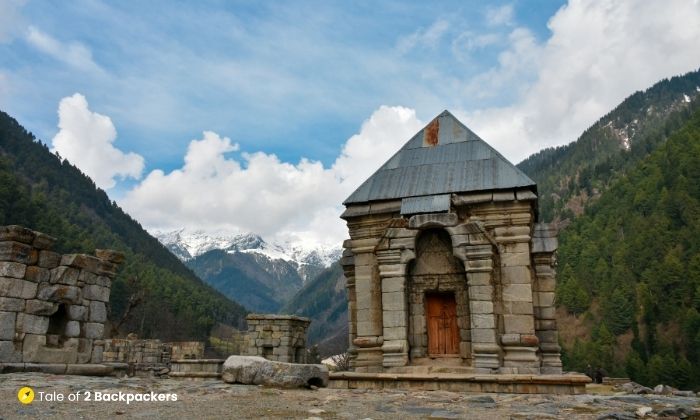
The Eastern Complex is the second group of temples also enclosed inside a massive stone wall. These six temples in this complex are completely in ruins. The largest one is dedicated to Lord Buteshwara (again Lord Shiva). The sanctum of the temple houses a huge Shiva Linga.

Between the eastern and the western group of temples lies the central pavilion that is completely in ruins. There are almost 30 monolithic bases that seemed to be a part of a pillared pavilion. All the temples in the complex are dedicated to various forms of Lord Shiva.
There is also a large water tank near the temple complex.

The caretaker of this Hindu temple is a Muslim. The villagers are also quite knowledgeable with the basic history about the place. So if anyone is looking for communal problems in this village, they are in for a shock. We had seen the same amount of warmth and hospitality by the Muslims during the Amarnath Yatra. This is the Kashmir and Kashmiriyat we found. There might be many problems in Kashmir, but that does not make them cynical.

Naranag Travel Guide
Being the base camp of Kashmir Great Lakes Trek and a few other treks, Naranag has a few homestays. These homestays are very basic in nature. Please do not expect any luxury here. However, the warmth of your host will always make your day brighter. Have your food at the homestay. I am sure you will love the homely meals prepared by your hosts.
Spring and summer, that is between April to June is a good time to visit Naranag. Trekking season in Kashmir starts from July and goes all the way till September. As mentioned before, Naranag village is the base camp for a number of treks. October is also a good time to visit.
Winters will be quite cold at Naranag village, but is a good time to visit. The snow covered landscape adds an added allure to Naranag and the Naranag Temple Complex looks quite enchanting. If you visit during the winter, do carry sufficient woolen clothes, jackets, socks and scarves. However, if there is excessive snowfall, roads to and from Naranag could be blocked. So take an informed decision.
Kashmir does not have prepaid mobile connectivity. You need to have a postpaid connection in Kashmir. The network at Naranag is weak. Our Vodafone Postpaid connection did not have a network at the village and homestay area, but we got a network in the middle of the Dumail trekking trail. Fancy, how does this network thing work! BSNL connection is a bit better.
We went to look for beautiful vistas and stunning panoramas in Kashmir. What we learnt is all about a fine syncretism of various schools of thought, culture and religion. We did not see Kashmir as an outcome of decades of strife, but a place of tolerance and acceptance.
This is the Kashmir we loved. Are you going to visit Kashmir?
Will you visit Naranag? Let us know in the comments below. If you like this post, please share this with your family, friends and neighbours.
Pin this for a later read!





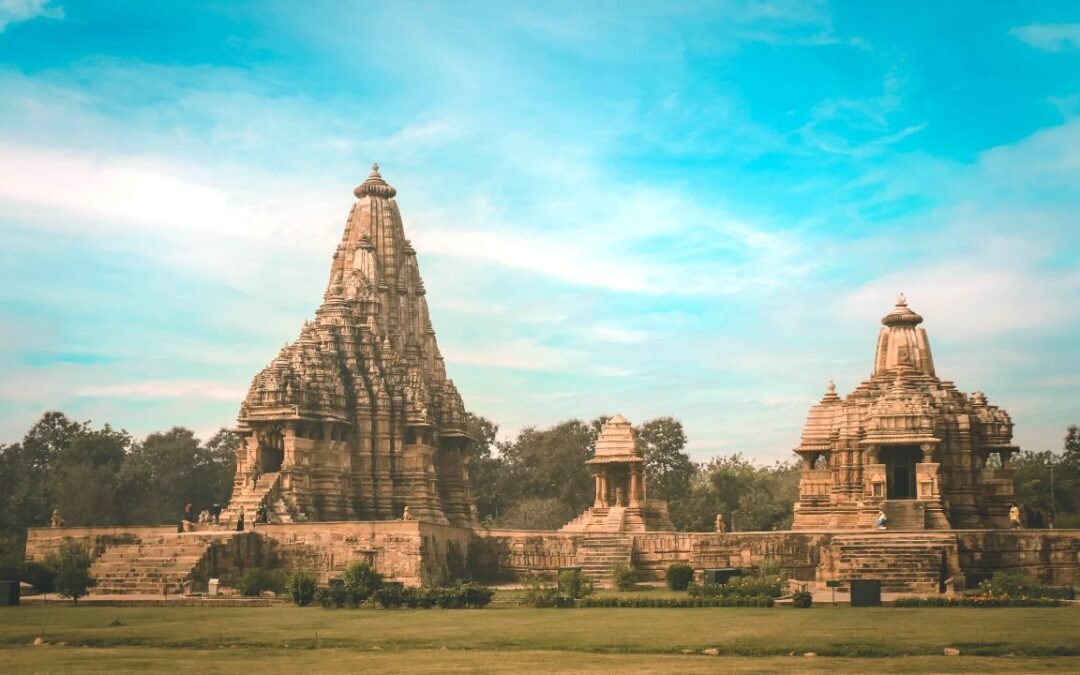




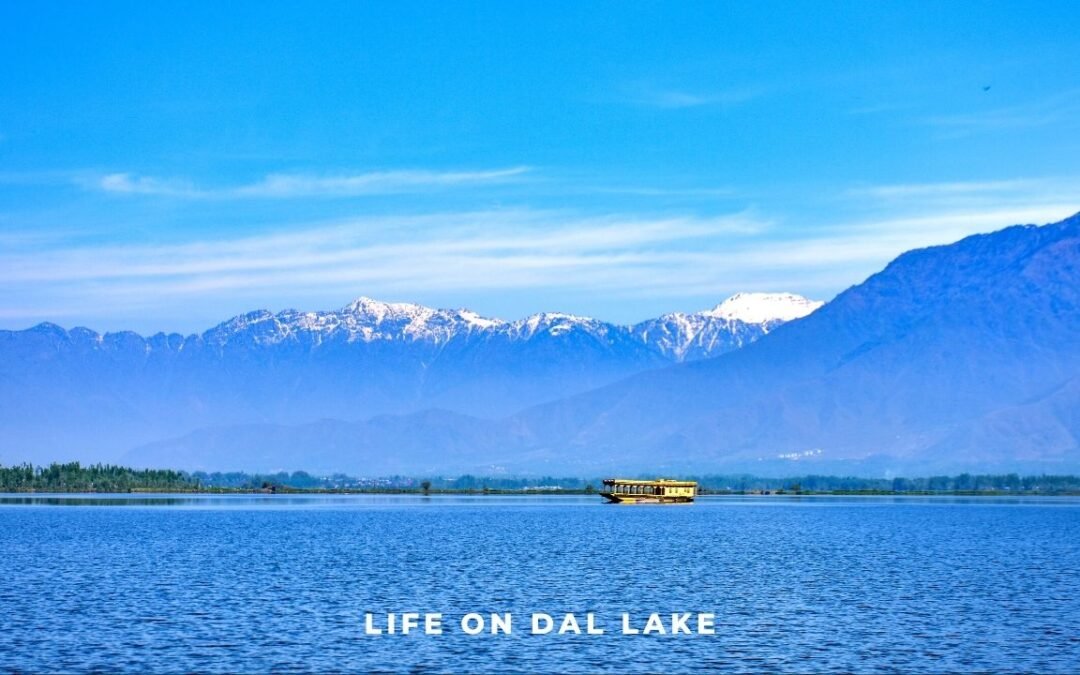
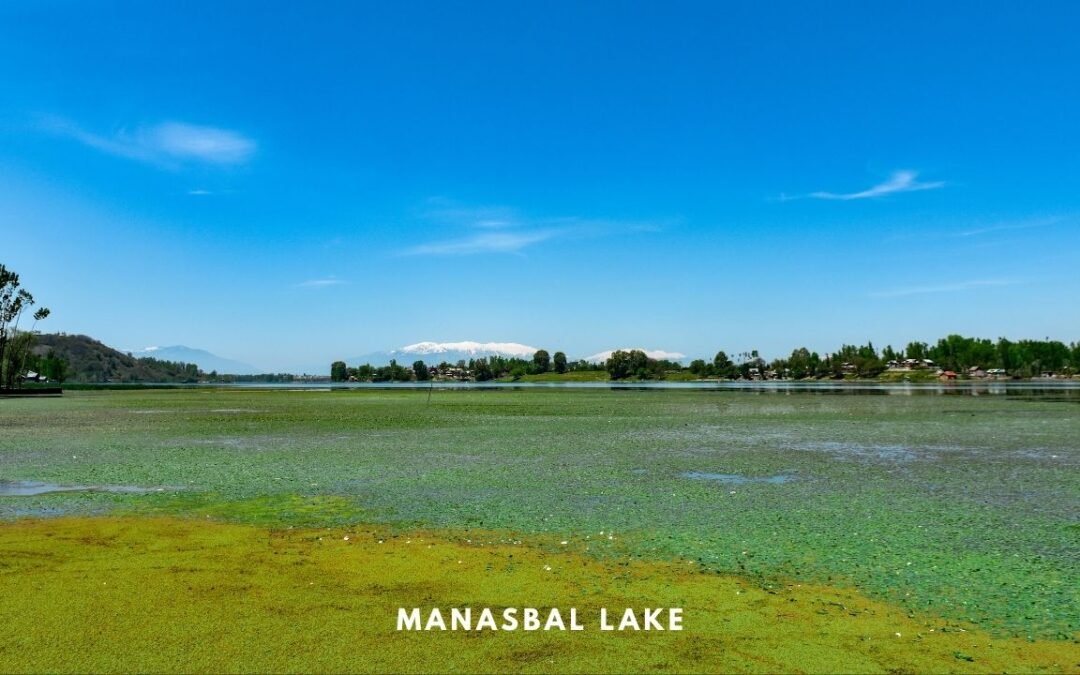
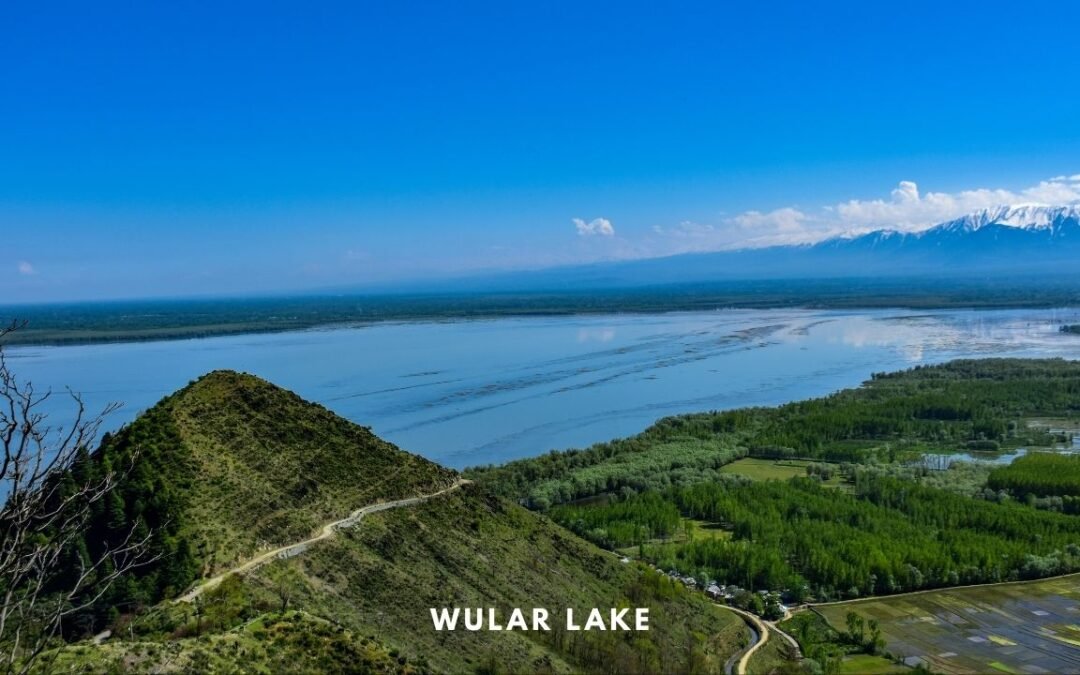
Thank you for this. Truly beautiful and brings my heart joy. With every breath I take, may you be blessed with abundance and many more adventures, for the Highest Good of All. And so it is. Om.
With Love and Light, always
Namaste
Thank you for your kind words.